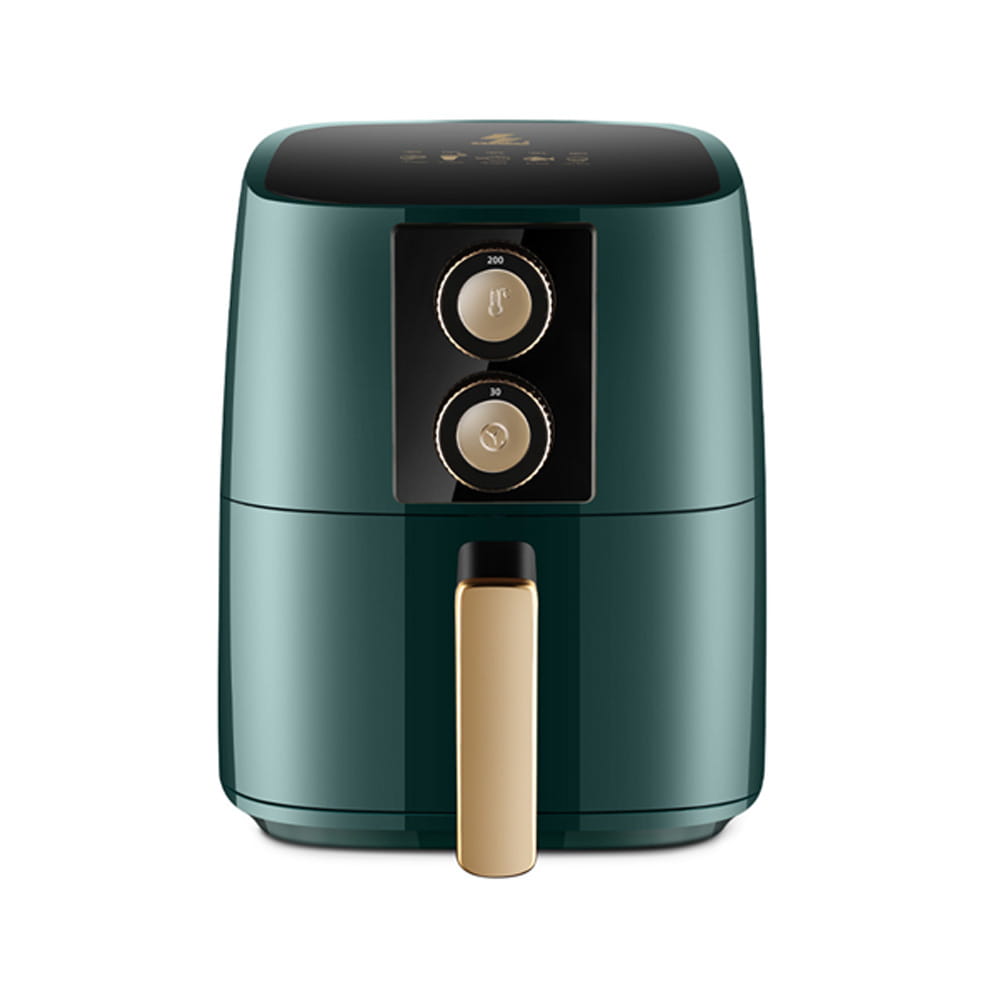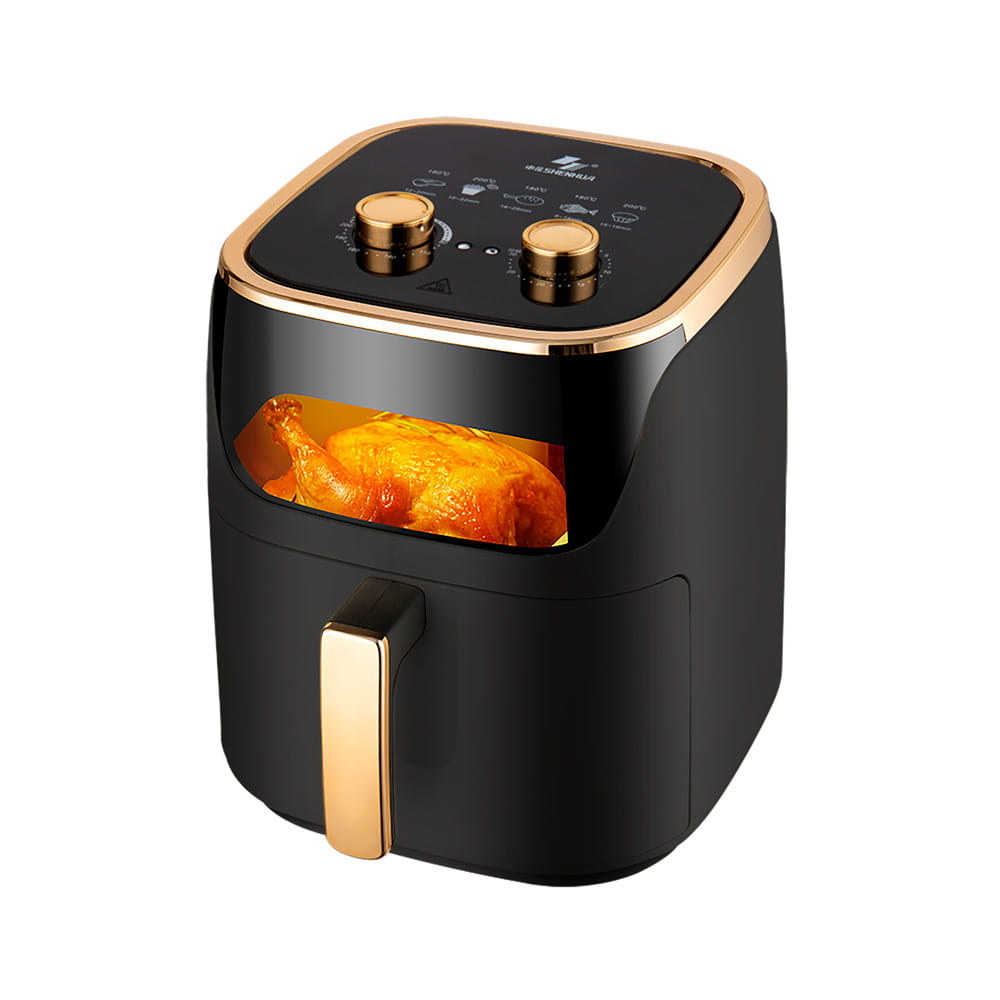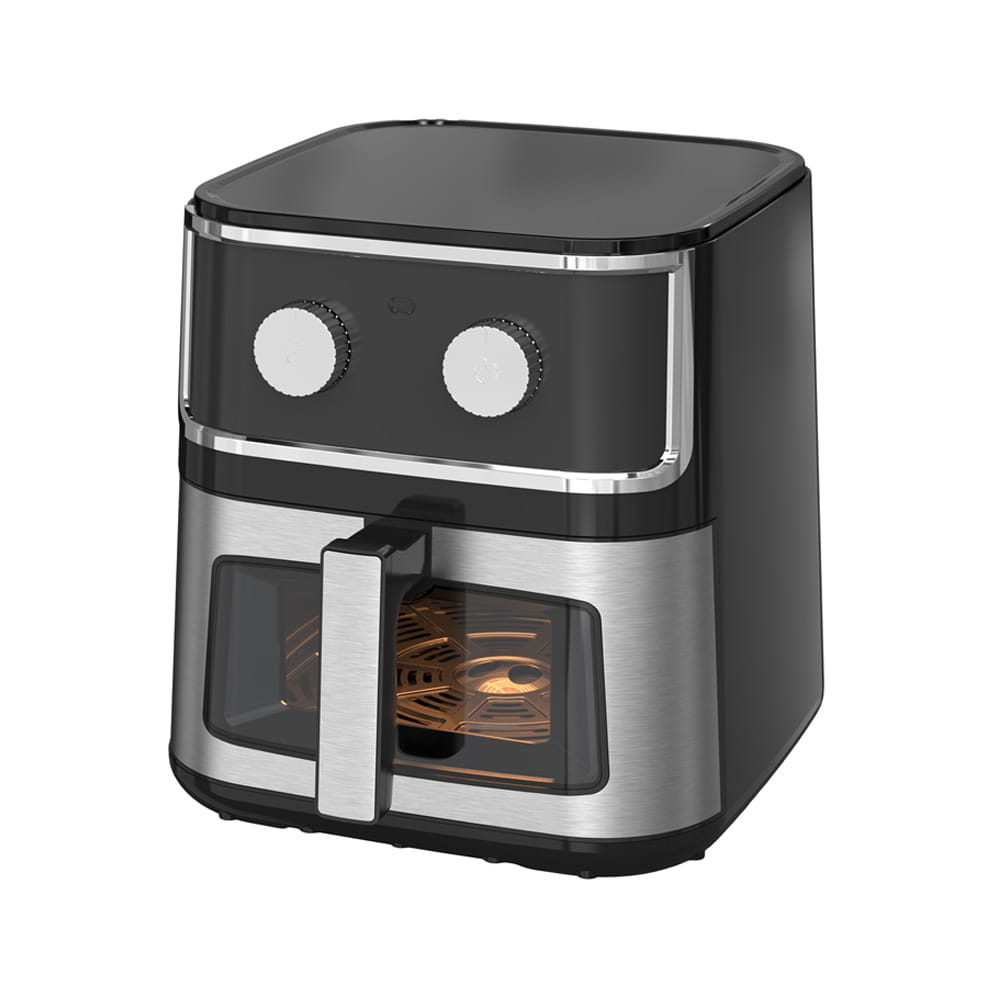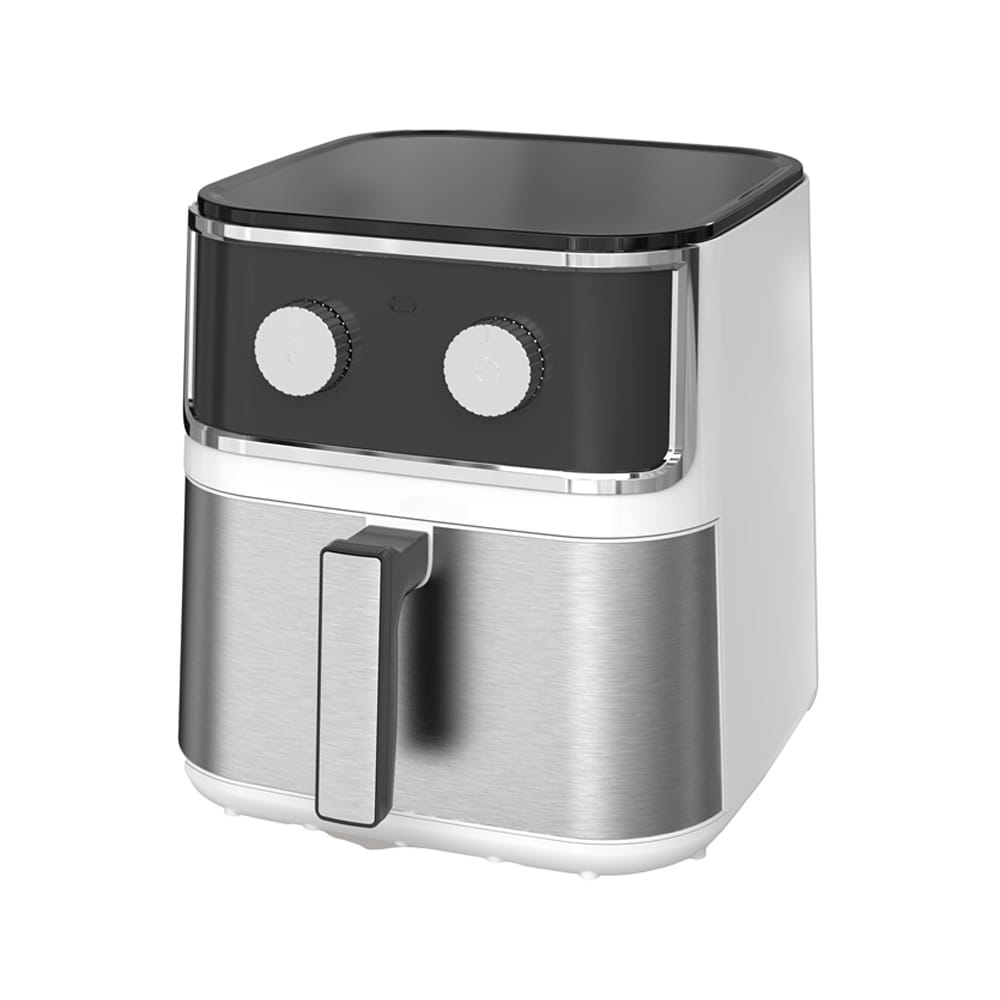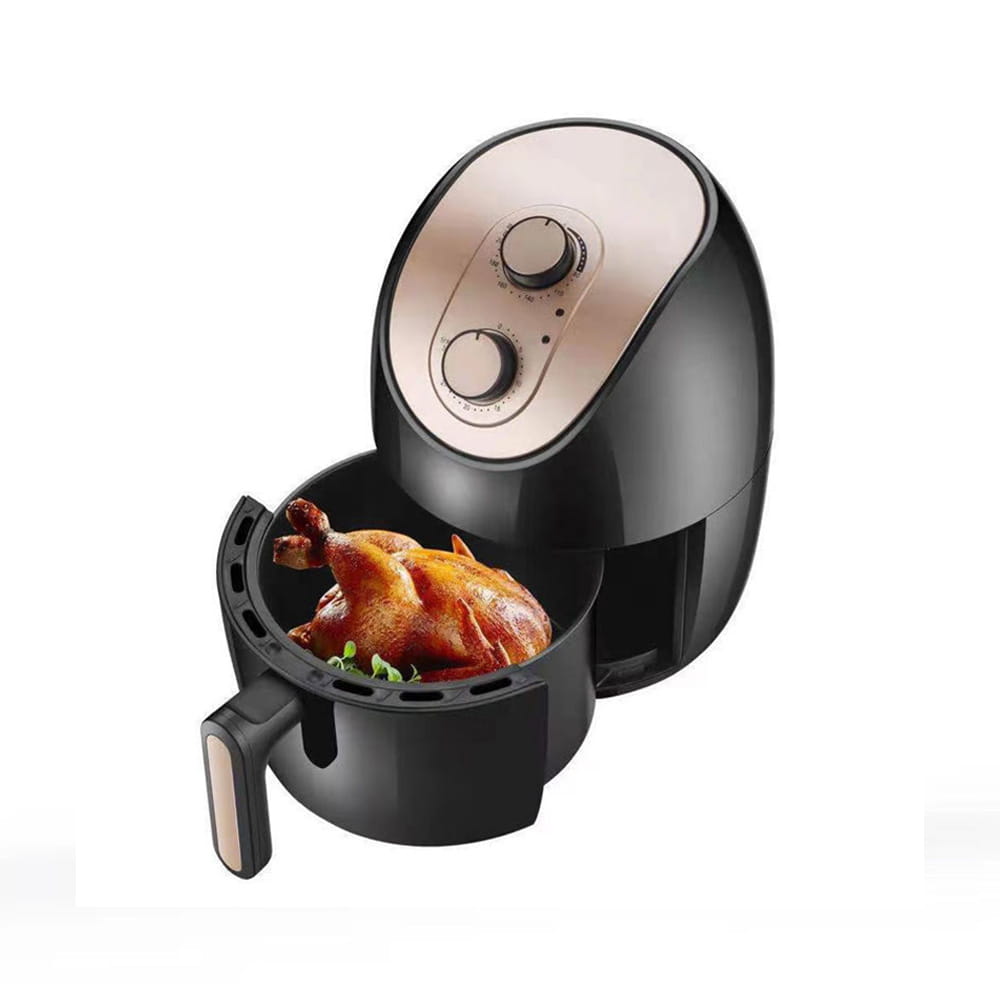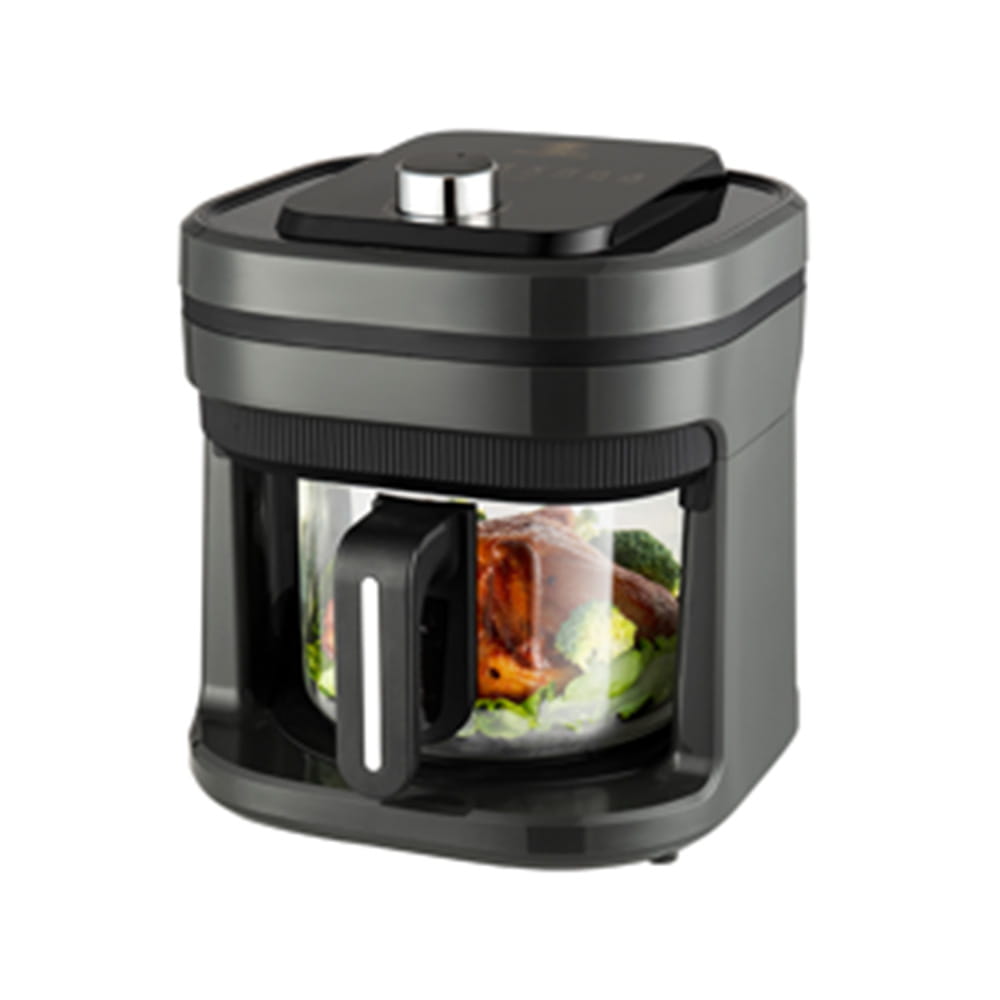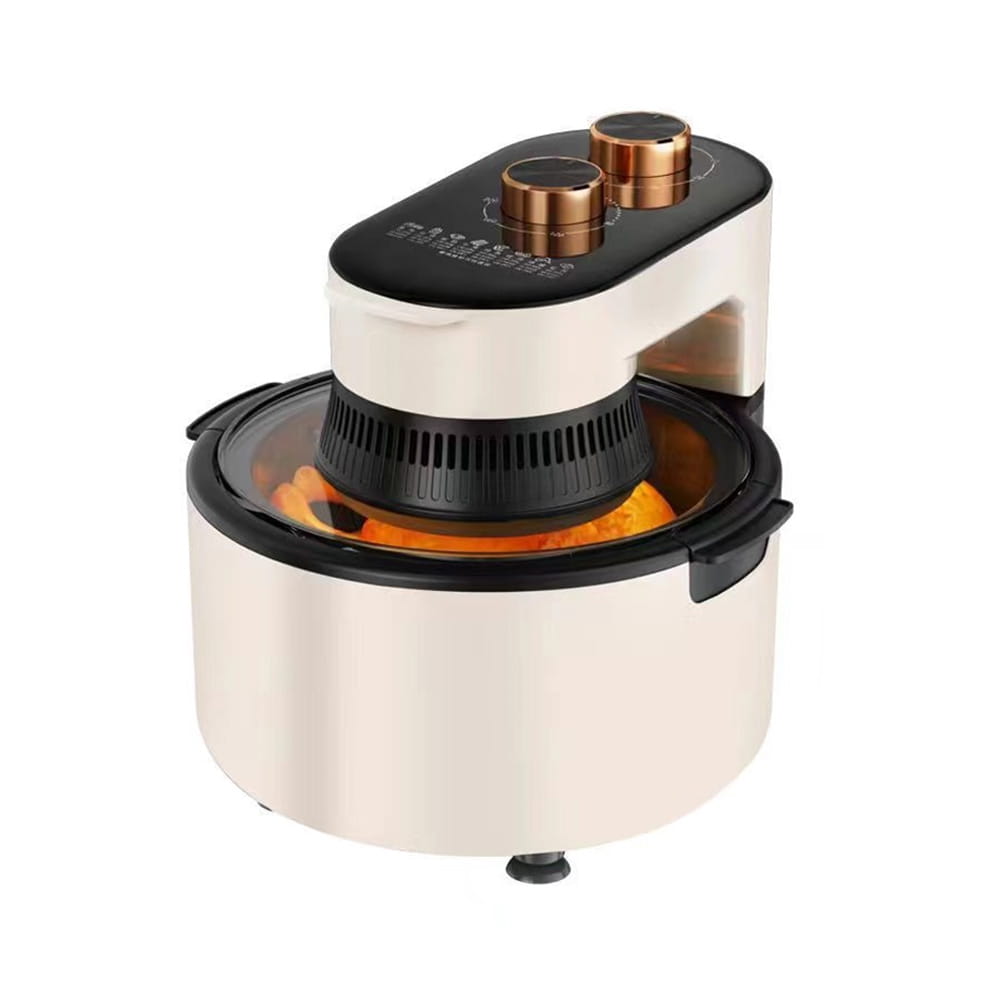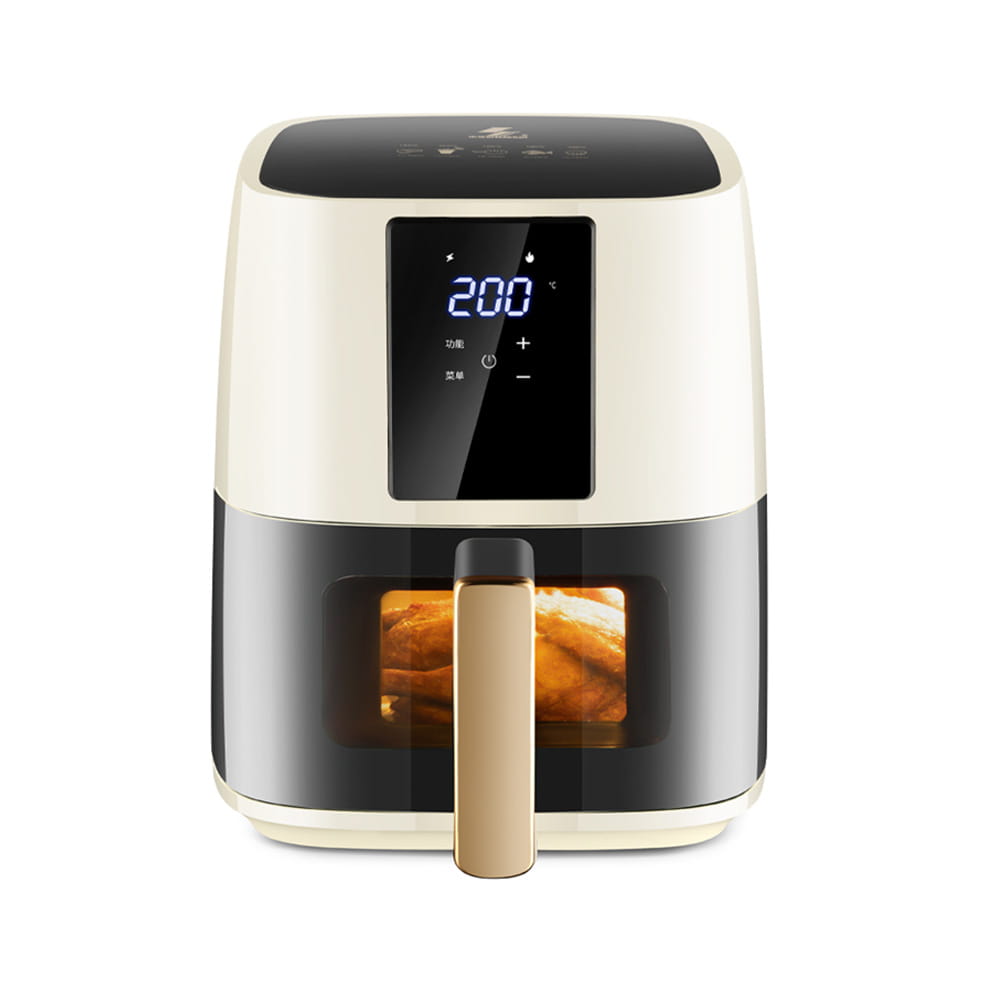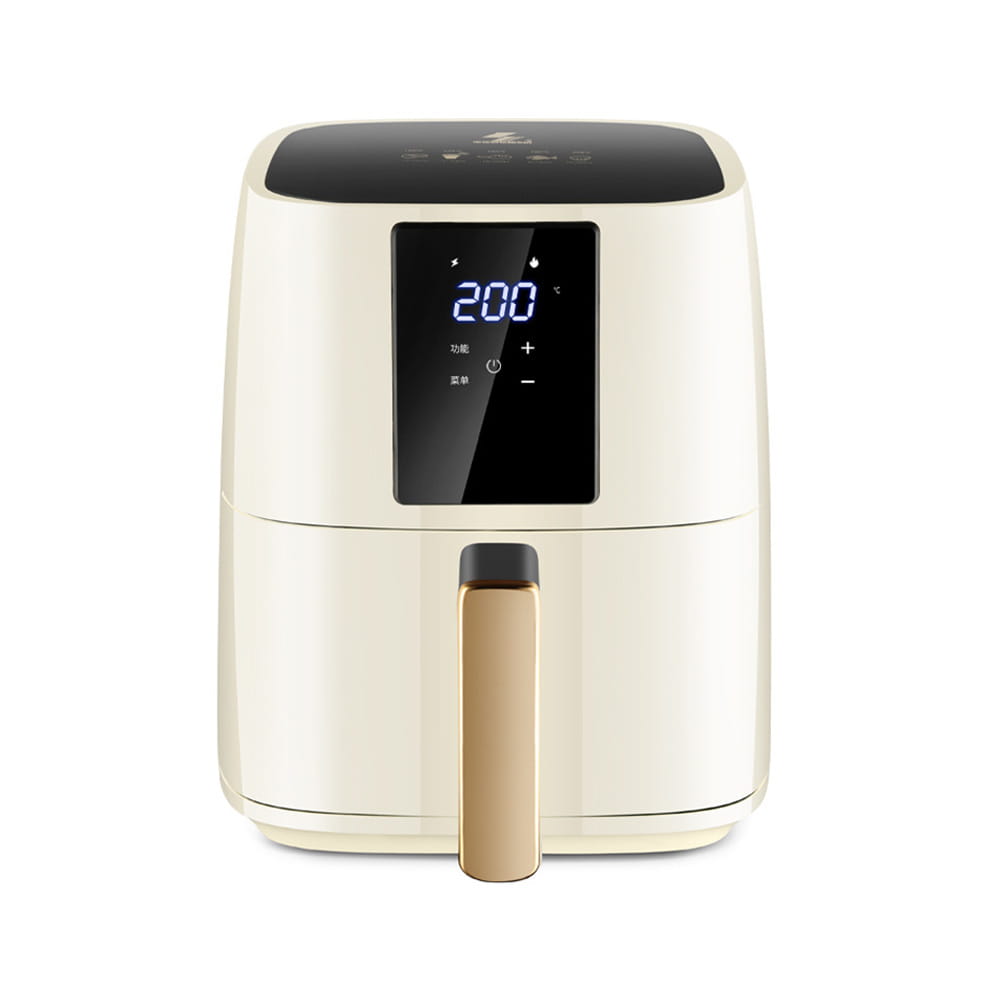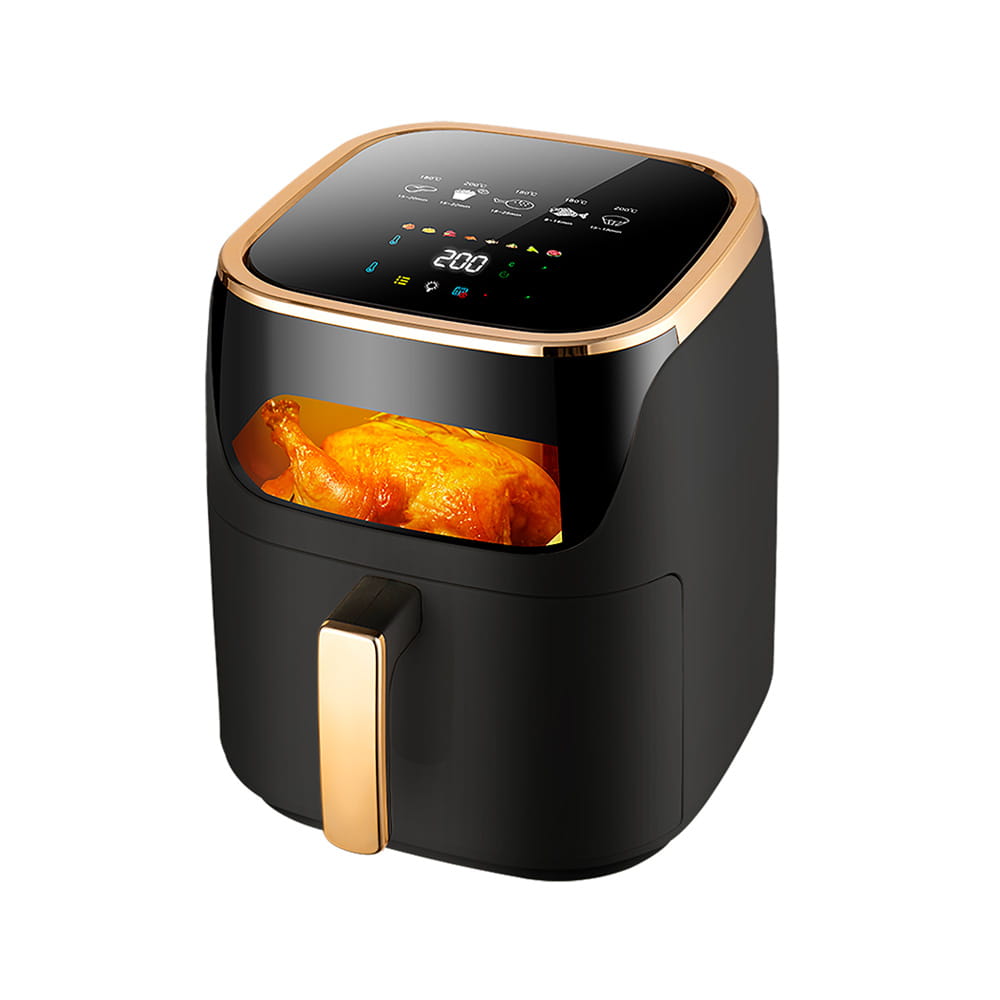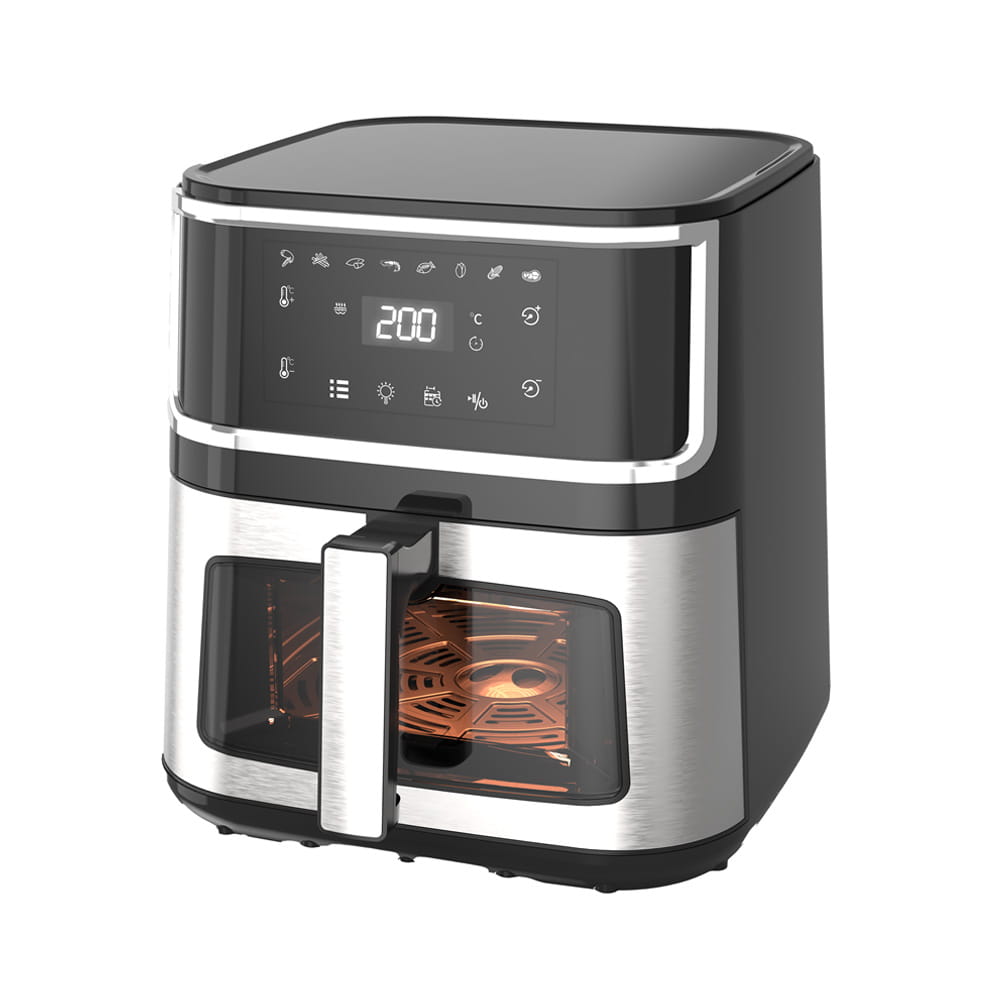Stainless steel, the core material of air fryers, is no accident. Its physical properties directly determine the device's heat conduction efficiency and heat retention performance, which in turn affects cooking quality and energy consumption.
1. Heat Conduction Efficiency: Fast but Uneven?
Heat conduction is one of the core principles of air fryers. Stainless steel's thermal conductivity is generally lower than that of metals like copper and aluminum, which might seem like a disadvantage. However, the specific design of the air fryer cleverly exploits this property.
Heat Conduction Mechanism: The air fryer generates heat through a top heating tube, which is then forced by a fan to circulate hot air around the food. This convection heating is the primary method of heat transfer, rather than relying on heat conduction through the fryer walls. The stainless steel fryer and basket are designed to act more like a "container" and "conduit" for heat than as the primary heat source.
Temperature Uniformity: Stainless steel's relatively low thermal conductivity actually helps prevent localized overheating. If the fryer's thermal conductivity is too high, the food in contact with the walls may heat too quickly, while the center remains undercooked, resulting in uneven heating. Stainless steel's properties allow heat to be distributed more stably and evenly throughout the interior, ensuring the overall crispness of food.
Surface Treatment: Many stainless steel air fryer inner pots feature a mirror polish or non-stick coating. Mirror-polished stainless steel has a lower thermal emissivity, reducing heat loss and indirectly improving internal temperature stability. Non-stick coatings, on the other hand, primarily serve cleaning purposes and have minimal impact on heat conduction.
2. Heat Retention: Long-Term Stability is Key
Beyond rapid heating, maintaining a stable temperature is another major challenge in achieving perfect cooking results. Stainless steel's heat retention plays a crucial role in this.
Heat Capacity and Thermal Hysteresis: Stainless steel has a high specific heat capacity, meaning it heats up more slowly for the same amount of heat absorbed. In an air fryer, when the heating element stops working, the stainless steel inner pot slowly releases its stored heat, reducing rapid temperature fluctuations and achieving a more stable thermal hysteresis. This thermal buffering effect is particularly important when baking temperature-sensitive foods such as bread and cake.
Insulation: High-end stainless steel air fryers typically feature a double-layer stainless steel construction or insulation between the inner and outer walls. Stainless steel's inherently low thermal conductivity, combined with this multi-layer design, effectively prevents heat transfer from the interior to the exterior. This not only protects users from burns but also minimizes energy waste, improving energy efficiency.
Temperature Stability: In continuous operation, stainless steel is better able to maintain the set temperature. When the internal temperature of the appliance drops slightly, the heat stored in the stainless steel inner pot and frying basket is continuously released until the heating element is activated again, creating a more stable temperature cycle. This temperature stability is a key indicator of air fryer performance.
3. Comprehensive Advantages of Materials
The use of stainless steel in air fryers goes beyond its thermal and physical properties. Its high-temperature and corrosion resistance make it an ideal interior material. Unlike some plastics or composite materials, stainless steel does not release harmful substances in high-temperature environments, ensuring food safety. Furthermore, its durability ensures the long life of the appliance, resisting damage from daily cleaning and friction.

 English
English Español
Español
